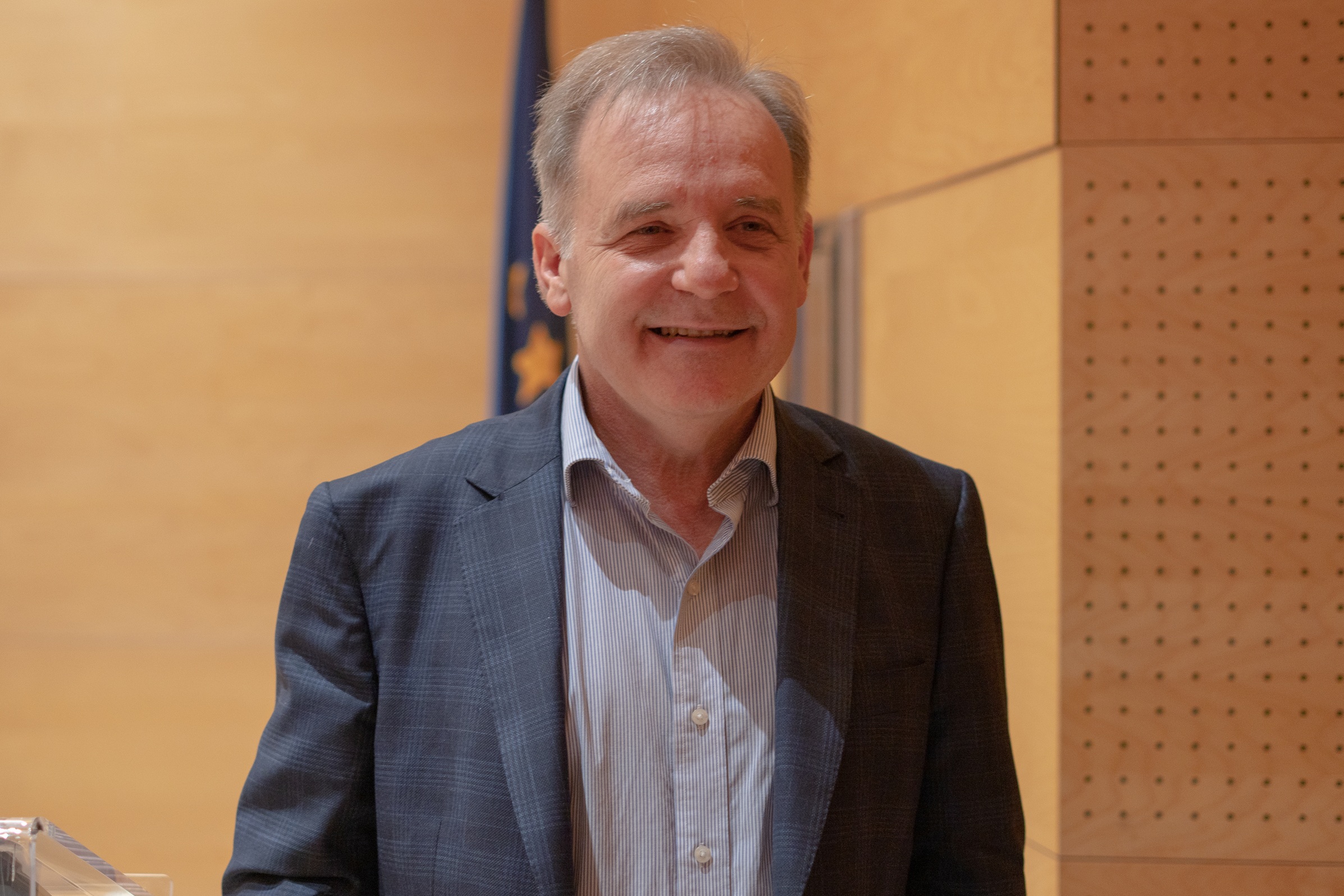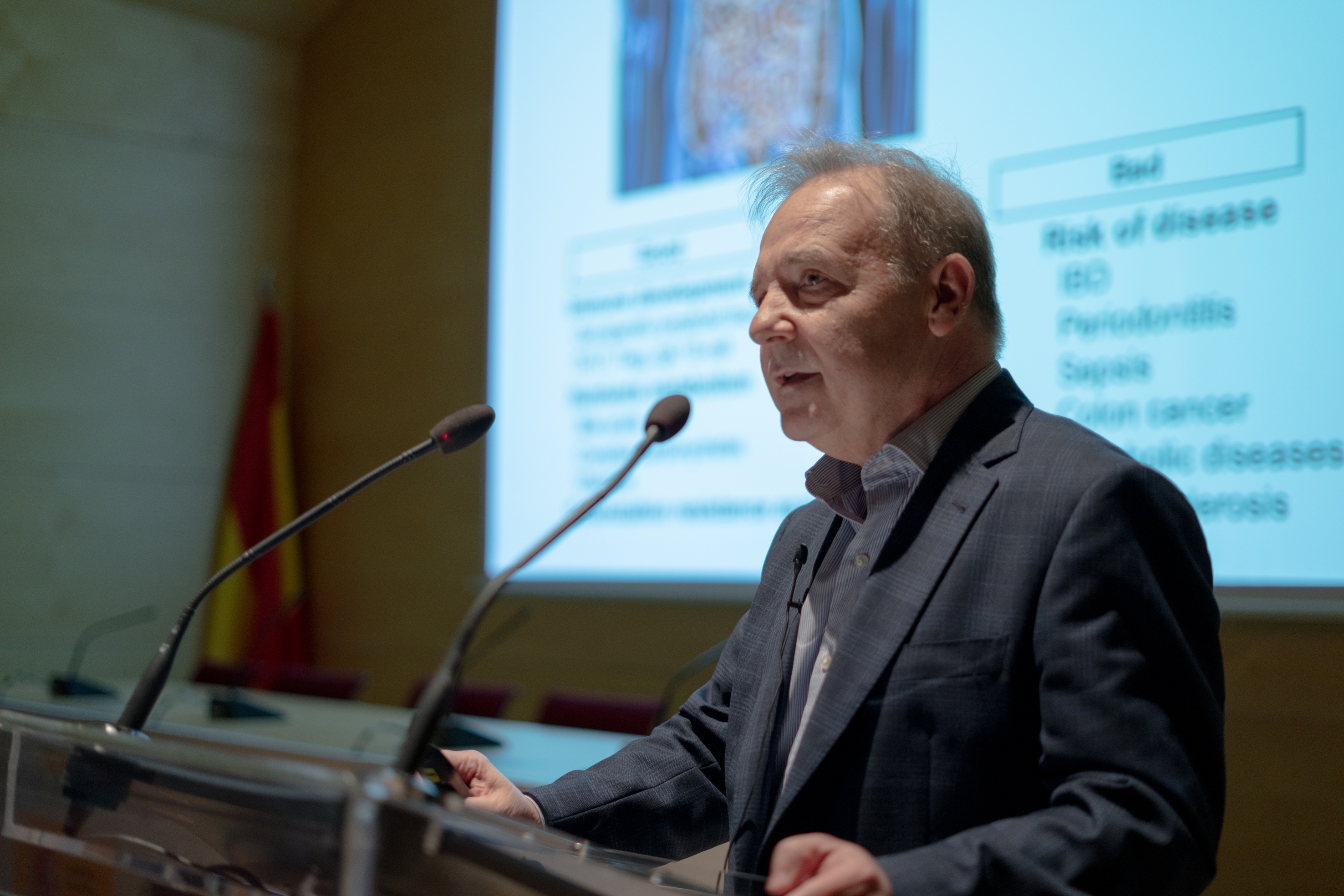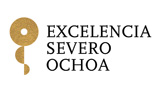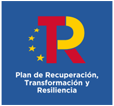Gabriel Núñez: "There is no unique, perfect microbiota"
Dr Gabriel Núñez Ollero holds a degree in medicine and surgery from the University of Seville, Spain. Between 1979 and 1984 he undertook post-doctoral training as a researcher at the University of Texas Medical Center, Dallas. Later, between 1985 and 1990, he completed his clinical residency with the Department of Anatomic and Molecular Pathology at Washington University in Saint Louis, Missouri. In 1991, he accepted a position as assistant professor in the Department of Pathology at the University of Michigan in Ann Arbor, where he was promoted to Full Professor in 2001. He currently holds the Paul de Kruif Endowed Professorship in Academic Pathology. His laboratory identified genes NOD1 and NOD2, the first members of the Nod-like receptor family, a class of pattern-recognition receptors that mediate cytosolic sensing of micro-organisms. Dr Núñez and his colleagues showed that genetic variation in an NLR family member, NOD2, is strongly associated with susceptibility to Crohn’s disease.
His research team is currently investigating the signalling pathways regulating innate immunity, interactions between the host and micro-organisms, and the microbiota’s role in the pathogenesis of inflammatory disease and in host defence against bacterial pathogens. He has mentored over 100 researchers, including 65 post-doctoral fellows, most of whom have become independent researchers and professors in universities in the United States, Europe, and Asia.
- You research the connection between the microbiota and inflammatory and autoimmune diseases. Could you explain how the microbiota influences these diseases?
The microbiota is a complex system. Looking at it in figures, the number of bacteria that make up our microbiota is larger than that of our own somatic cells. In fact, in terms of amount, we could say that we are more bacteria than human. The same thing happens at gene level since the number of genes in the microbiota is higher than those of our own genome. It’s clear that some diseases are directly caused by microbiota. Some people die from infections caused by micro-organisms that were already in their bodies. A clear example of this is sepsis: when a bacterium reaches the bloodstream causing septic shock. The origin is often a bacterium already existing in the patient’s organism rather than one acquired in the hospital.
There are other diseases, like ulcerative colitis and Crohn’s disease, with a major genetic component, but in which certain intestinal micro-organisms also play a role. In these cases, we know that the microbiota is a necessary factor in the disease’s progression.
Then there are many other diseases which the microbiota is considered to influence, although it is not clear to what extent. For instance, in atherosclerosis it has been found that certain metabolites produced by bacteria can foster development of the disease. However, we don’t know whether atherosclerosis would occur in the same way without the presence of these bacteria or if their influence merely accelerates the process.
The list of diseases in which the microbiota is believed to play a role is getting longer. Studies have researched its association with autism, liver diseases and many other conditions. However, most studies used animal models, so it isn’t yet clear whether the effects are the same in humans. What we do know for sure is that, in conditions like sepsis or septic shock, the bacteria that cause the condition come from the patients themselves and, in some cases, can be fatal.
- How can we help or contribute to improving our microbiota?
Each of us has a unique, different microbiota. Colonisation of the microbiota begins immediately after birth, influenced by the mother, physical contact with her, the hospital environment, doctors, and nursing staff. From that moment the gastrointestinal tract and the skin start to become populated with micro-organisms. However, most microbiota are found in the gut since this is where most nutrients are available. There are fewer bacteria on the skin because there are fewer sources of nourishment.
Nutrition plays a fundamental role in the microbiota. Diet can also drastically change its composition in under 48 hours. For instance, a diet rich in meat or one that is vegan generates significant changes in gut microbiota. Many bacteria depend on vegetable fibre to survive. Although our organism cannot digest fibre, it reaches the colon, where certain bacteria ferment it, producing compounds that are beneficial for our health.
The relationship between the human body and the microbiota is known as mutualism: we provide nourishment and a stable environment for these micro-organisms and they, in return, offer metabolic benefits, protection against infectious diseases and other essential functions. It is a balance that benefits both sides.
- And then there’s diet.
The microbiota can be modified in various ways, but some are more efficient than others. Diet is a key factor that can significantly change it. Nevertheless, another element with a profound effect on its composition is the use of antibiotics. When we take antibiotics, we eliminate certain bacteria that are sensitive to them, which temporarily changes the microbiota. Although many of these bacteria can colonise the intestine again when treatment is suspended, there is always a reservoir of resistant micro-organisms that survive and contribute to its recovery.
The use of antibiotics during infancy is a particularly important issue. There is evidence that frequent use during the first years of life may be related with a higher risk of developing allergies and other diseases in adulthood. That’s why guidelines recommend using antibiotics only when strictly necessary, not just to avoid antimicrobial resistance but also to minimise possible long-term effects on the microbiota and health in general.
- Probiotics, prebiotics…
Probiotics contain live micro-organisms, like those found in yoghurt. But it isn’t clear whether taking them has a significant impact on gut microbiota. When we ingest these micro-organisms, they do not remain in the digestive system for long because they are naturally eliminated. That’s why I always say, “Eat yoghurt if you like it, because it is a healthy food, but don’t expect great probiotic benefits.” To date, no studies have conclusively shown that eating yoghurt or other probiotics significantly changes the microbiota, partly because it’s very difficult to design studies that verify this with any certainty.
However, treatments based on microbiota have proved effective for some conditions. A specific case of this is pseudomembranous colitis, a serious infection caused by Clostridioides difficile, a bacterium that releases toxins causing severe intestinal inflammation. This disease usually appears when the prolonged use of antibiotics reduces the diversity of gut microbiota, allowing uncontrolled pathogenic overgrowth of the bacterium.
In such cases, faecal microbiota transplantations have proved to be a highly effective, inexpensive treatment. This consists of transferring the full range of gut microbiota from a healthy donor to the patient to restore bacterial balance in their intestine. In the USA, the donation usually comes from family members, whereas in Europe donors are medically evaluated and selected to guarantee they carry no pathogens.
Previously, this procedure was performed in a rudimentary way, with the microbiota administered via a tube. Nowadays, we have white capsules specially designed to contain the necessary bacteria, which makes treatment more accessible.
- You mentioned the acquisition of bacteria when we are born. Many studies show that babies delivered by caesarean section have a microbiome different to children born by natural childbirth.
It isn’t clear if it’s better or worse. What has been confirmed is that their microbiotas are different during the first months of life. Some studies suggest that around the sixth month of life these differences can balance out due to maternal and environmental contact. To date, there is no clear evidence of a significant, long-term effect. It is true that babies born by caesarean section initially have a different microbiota, but this usually balances out in a few months. So, it doesn’t seem to be a deciding factor for health in general.
- What does seem to have been shown is that populations living in more isolated environments, such as indigenous communities in the rainforest, have a microbiota that is much more diverse than the populations of industrialised areas.
Yes, precisely. They have greater microbial diversity and species of bacteria that we no longer have. It is thought that some of these bacteria formed part of the human microbiome in the past but have become lost due to changes in nutrition and our modern lifestyle. Diet plays a fundamental role in this difference.
- Are there microbiota banks to preserve these bacteria before they eventually disappear?
Yes, there are initiatives to preserve the microbiota of indigenous communities, like those of Colombia, Peru, or Brazil, because these populations have a microbiota very different from ours. This is due, in large part, to their diet, which is very different from the western diet.
- And if someone lived with them for a long period, could they acquire part of their microbiota?
I don’t know if there are specific studies about this, but it seems likely. There is evidence that bacteria can pass between people who live together, for instance, between siblings. Although each person has their own microbiota, those of siblings, although not identical, are usually more similar to each other than to those of unrelated individuals.
- Of course, because although they have grown up in the same environment, they were born at different times, possibly in different hospitals, and that also influences the microbiota they acquire from birth.
Exactly. The moment and the circumstances of birth influence our initial microbiota, but then factors like diet, environment and contact with other people also play an important role in its development.
- Is there an “ideal” microbiota that would protect us from all diseases?
There is no unique, perfect microbiota, but we do know that certain groups of bacteria can protect us against some diseases. For instance, there are populations of bacteria that help prevent oral route infections. However, we still do not fully understand how they work, or which species exactly are responsible for this protection.
- Could we use this knowledge to develop protective strategies?
That isn’t clear yet. The human microbiome is incredibly diverse; estimates are that each person is host to between 500 and 1000 different bacterial species. This variability makes it difficult to identify an “ideal” microbiota applicable to everyone.
- You studied at the University of Seville and then went to the USA to do a post-doctorate.
Yes, I studied medicine in Seville. I went to the USA when I was 24. My case was a little different to most researchers who leave Spain. I went on my own. I studied medicine, I did the MIR residency exams and obtained seventh place in Spain. I was planning to accept a position in Madrid’s Puerta del Hierro hospital because they had a good immunology department. But in 1978, while I was at a conference in Rome, I met a professor who offered me a place in his laboratory in Texas. I knew of him, but we had never met in person. If I had not gone to that conference, my life would have taken a completely different route. My intention had been to go abroad later, after I had completed my training in Spain. I had no idea I would go so early.
First, I went to Texas, then San Luis, and finally I arrived in Michigan, where I have been for 30 years. I’ll probably retire there. But since 2019, I have spent the winters in Europe because that season in Michigan is very harsh. First, I went to Lisbon, then Madrid, Germany -in Freiburg- and now I’ve returned to Seville. I’m also professor at the University of Osaka, Japan, where I spend one month a year. So you could say that I live on three continents.
- Have you ever considered returning to Spain?
No. The thing is, we all have a crisis, an existential crisis. Most people who emigrate do it for financial reasons. Many think that when they arrive in another country, they’ll get rich, but the reality is different. Return? No. Really, it’s a myth, because it almost never happens. Very few people return with a large fortune, like the returnee emigrants, the indianos, who bought fine houses in Asturias: these were the few, the majority remained abroad.

In my case, when I left, it was not for financial reasons, but because I wanted to train as a researcher. It was a personal choice. The existential crisis can arise after five or ten years, when you realise that you are settled, and you probably won’t return. That’s when you ask yourself: do I really want to live here or not?
I didn’t have a strong connection with Spain at that time. Yes, I had family in Seville, but it wasn’t a question of that. It was about deciding where I wanted to live: in this country, in the United States or somewhere else. And the time comes when you have to make a decision, above all when you finish your training, and you need to find a stable job with prospects. Sometimes you spend a year thinking about it, exploring alternatives, wondering what the right path is. But there comes a time when things are clear, and you just carry on.
- But now you’re choosing the best each place has to offer, so to speak?
When the time came to retire, I decided not to do it abruptly. The American system is quite flexible in that way. In academia, you don’t have to follow a strict route up and down. I thought about retiring in 10 years and decided to start to spend the winters away from Michigan and transition gradually.
I had lots of projects and grants, but I opted to reduce the size of my laboratory and not renew. Fortunately, my university allowed me to do this with no problem. There, you have the possibility of maintaining your own laboratories and managing work at your own speed in a progressive way.
- Did you always want to study bacteria?
No, not at all. My initial focus was immunology, cancer and then innate immunity and microbiology. Since the pathology of inflammatory diseases is closely related with innate immunity and infections, getting into the study of microbiota came naturally. I started working on microbiota around 2008-2009.
- From your experience in different countries, do you see much difference in how research and teaching are set up?
Yes, there are many, particularly in Japan, where the system is very different. Now I am older, I spend a lot of time mentoring, helping young researchers. In Osaka, for instance, I am mentor to two young professors. And in Seville, at IBIS (the Institute of Biomedicine of Seville), I organise activities and support for predoctoral and post-doctoral researchers.
- What does mentoring consist of?
This year, for instance, I organised a congress between three research centres in Seville. It was the first time something like that had happened. And it was the students themselves who prepared the event and presented the speakers. It was a way of teaching them to organise this type of meeting.
- Do you think Europe should learn from the American research model?
In the United States, organisation of research and finance work very differently. Centres are independent and their funding doesn’t rely on a central organisation, only on the resources a centre can find. They do get support from projects, local government, or state grants, but each department and hospital manages its own finances. There is no unified national system; each institution has the freedom to contract whoever they choose. They are financially autonomous: if they have a lot of money in the bank, they can contract more staff and operate with more flexibility. Conversely, if they have limited financial resources, they need to make adjustments. Here, hospitals depend on the Social Security, and everything is a lot more bureaucratic. This has advantages and disadvantages.
- These are uncertain times for scientific research in the USA. How is the situation affecting your work?
For the academic community and for the researchers who form a part of it, the recent changes have been quite radical. We still don’t know with any certainty what the outcomes will be. There are rumours about possible cuts in the science budget and certain subjects being eliminated, but there is still no definitive information. Many projects are on hold, and the future of funding is still uncertain, which has generated great concern amongst academics. For instance, one of the approved cuts affects overheads (indirect spending). Before, if research was given $100,000 funding, an additional percentage was added to cover these costs, which might vary between 30% and 70% depending on the institution (e.g., as much as 70% for Harvard). Now, the percentage has been reduced to 15% across the board. This cut represents a significant loss of available funding. Although the measure has been approved, a judge has blocked its application for the time being. Nobody knows what will happen in the future.
- You participated in Fundación Occident’s Visiting Researchers Programme at CNIC, but you had to leave due to the COVID pandemic. Would you like to return to CNIC?
I loved being at CNIC, and I wouldn’t mind returning. I had 15 days remaining when I had to leave suddenly and return to the USA in March 2020 due to COVID.











